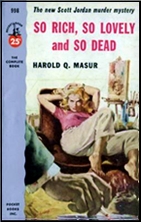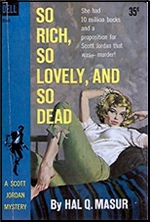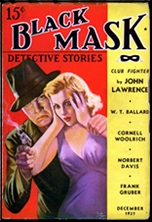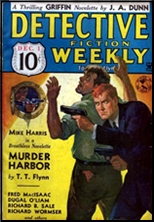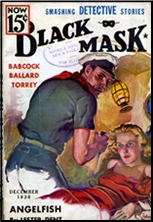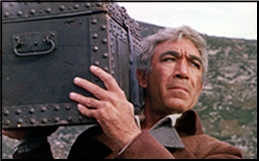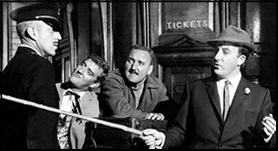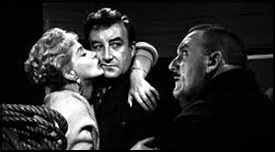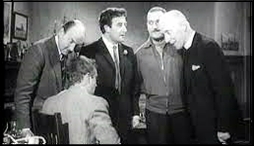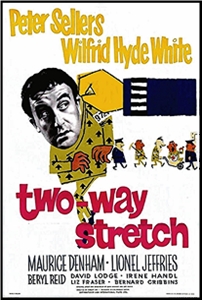Thu 12 May 2022
WINDY CITY PULP CONVENTION 2022 REPORT, by Walker Martin.
Posted by Steve under Collecting , Conventions , Pulp Fiction[16] Comments
by Walker Martin
A few years ago, one of my best friends attended Pulpcon, despite knowing he had a terminal illness. Hardcore collectors will survive just about anything except death. My health problems lately have not involved a terminal illness, but I suffer from claustrophobia, and I had to undergo two cataract operations in April. Despite being disappointed in these procedures, I somehow managed to, go with four other collectors in our usual van.
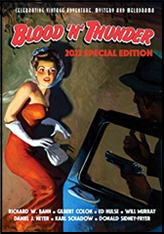
Fortunately, this convention managed to cheer me up and here are my comments on the Windy City Pulp Convention. There have been over 20 of these shows and this was the 15th year at the Westin Hotel in Lombard, Illinois, which is about a half hour outside Chicago. Doug Ellis stated that there were about 500 attendees and 180 dealer tables.
No masks were required, but many collectors wore them just to be safe. As usual the dealer’s room was very busy and set up was allowed on Thursday evening from 8 pm to about 11 pm. There were thousands of books, pulps, vintage paperbacks, original art, new pulp novels, movies on DVDs and comics.
Some excellent books made their debut at the show. Ed Hulse of Murania Press had what looked like his biggest magazine on the pulps, Blood n Thunder 2022 Special Edition:336 pages, over 100,000 words, and over 100 illustrations. There are 10 essays in the book with the most important being the 120 pages devoted to the Doubleday Crime Club Golden Age, 1928-1940. Ed also had a preview copy of his new book, an updated edition of Wild West in Fiction and Film.

Matt Moring of Steeger Press had several new books for sale on Mike Chomko’s table: Unremembered Murder by Carroll John Daly, volume 7 of the Race Williams series, all from 1944-1955, The Major by L. Patrick Greene, volume 4, The Life of Pinky Jenkins by H. Bedford Jones, volume 3, and the best one of all, The Complete Exploits of the Notorious Sea Fox by James K. Waterman. This last collects several stories from Frontier in the 1920’s and deals with the infamous slave trade before the Civil War. Steeger Books has passed the 600 book mark I believe. Amazing and quite an accomplishment.
Also available was the new edition of the Windy City Pulp Stories, #21. 130 pages, all devoted to Fiction House. The best article was Will Murray’s “The Rise and Fall of Fiction House”. Also of note are articles dealing with Arthur J. Burks, the pulp magazine, Black Aces, and other Fiction House items of interest.
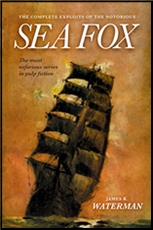
The art show had several original cover paintings and illustrations from Fiction House magazines and I was really impressed by the excellent display. Ed Hulse ran the usual film show which showed serials and B-movies during the day and after the evening auction.
Speaking of the auction, John Gunnison did his usual fine job as auctioneer. Friday night had 200 lots from the Robert Weinberg Estate and Saturday night had almost 200 lots from the Glenn Lord Estate. An entire set of Planet Stories was auctioned in several lots, many Weird Tales, including the Anniversary large issue from 1924 ($8000), and all sorts of correspondence. The Gent From Bear Creek by Robert Howard sold for several thousand.
There were the usual panels and I attended the Fiction House discussion given by Roger Hill. On Saturday night David Saunders did his usual excellent job discussing such Fiction House artists as George Gross, Allan Anderson, and Norman Saunders. I’m looking forward to his Pulpfest presentation on Nick Eggenhofer this August.
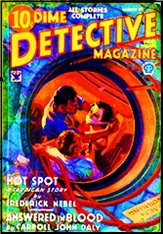
I’ve been collecting now for over 65 years and I don’t need much anymore, but I always find something. This year I’m rebuilding some of my sets such as All Western and Dime Detective. I found several copies of each that I need plus an Ace High from 1926 that I’ve been looking for.
One of the problems of collecting for a long time is that you start to run out of things to collect. Most of my wants are very odd and hard to find, such as the five Sea Stories I lack. There were 118 and I have 113, so it’s not too likely that I’ll find issues I need. Same thing with Western Story and Detective Story. I only need a few issues of each for complete sets, but I’ll probably never find them. But you never know. I never thought I’d find all 444 All Story either but I did.
Pulpfest is up next in August 4-7, 2022, in Pittsburgh. The 50th Anniversary of Pulpcon/Pulpfest! I never thought I’d see such a long run of conventions when I attended the first one in 1972. But here we are. See you there!

